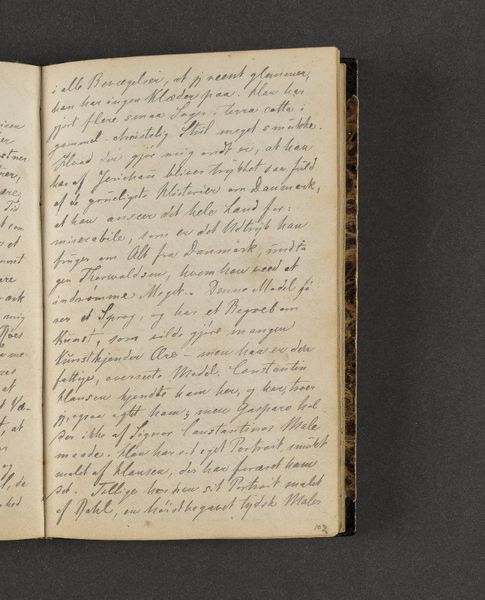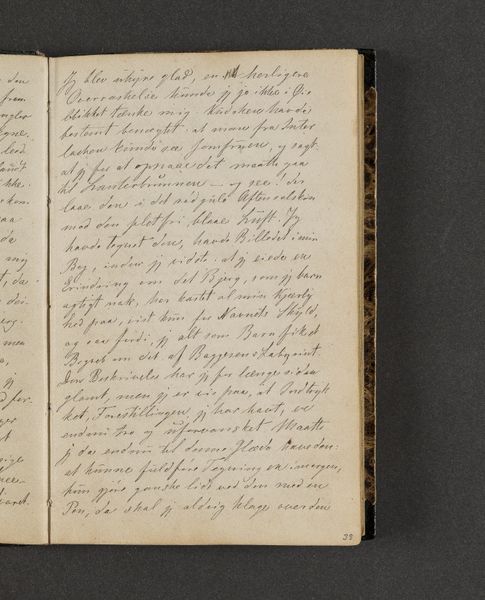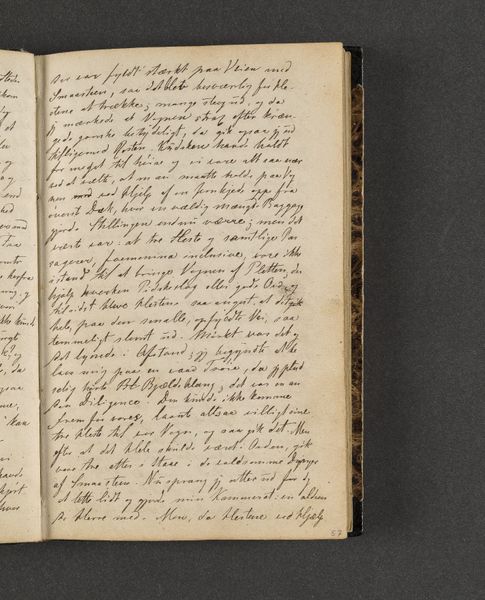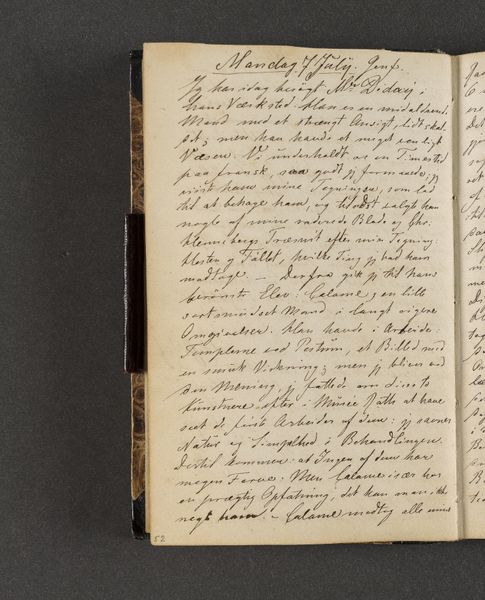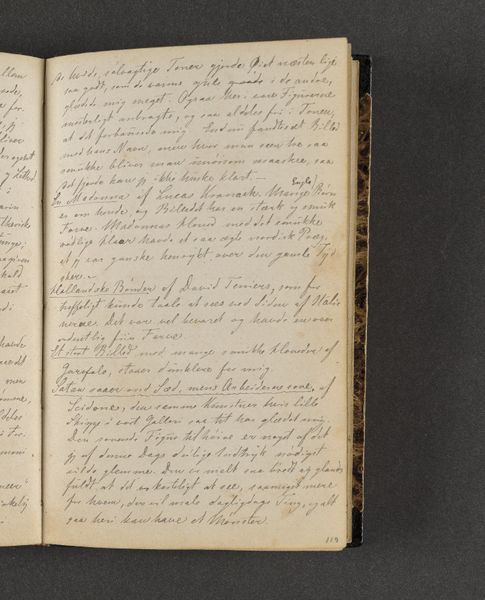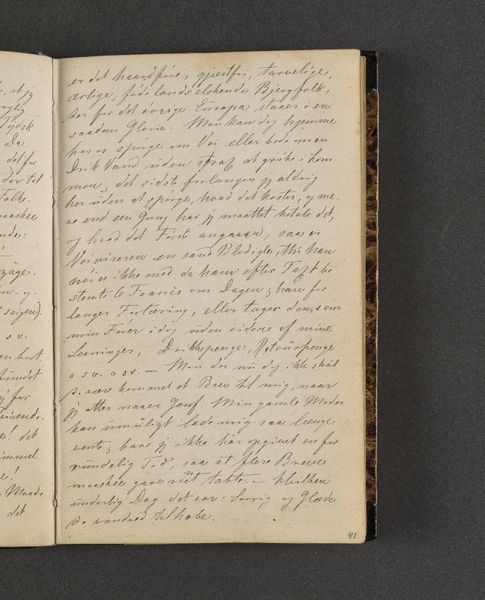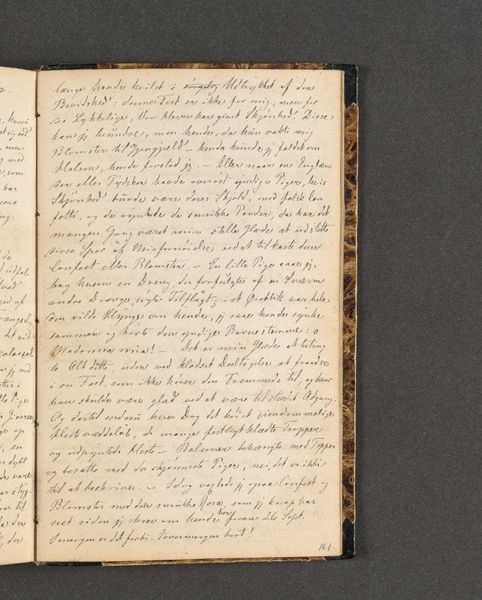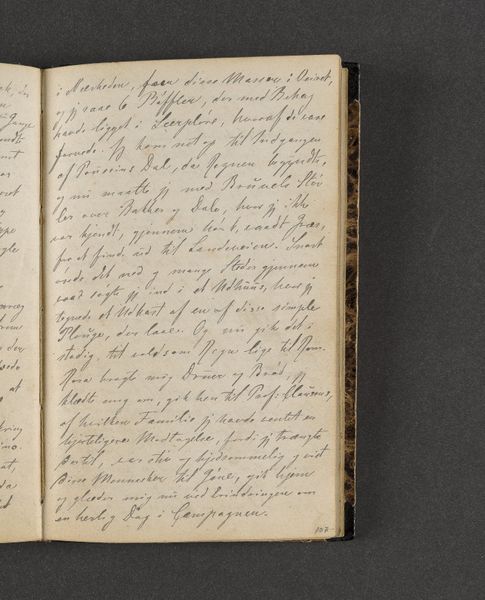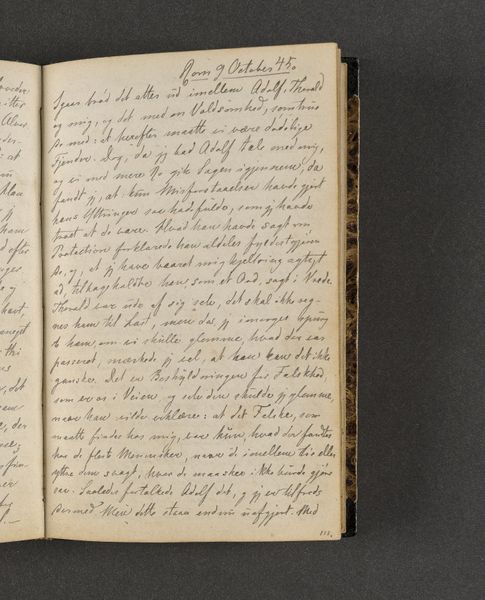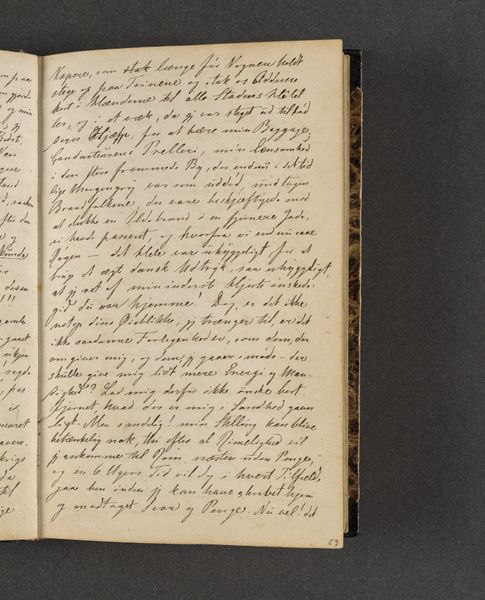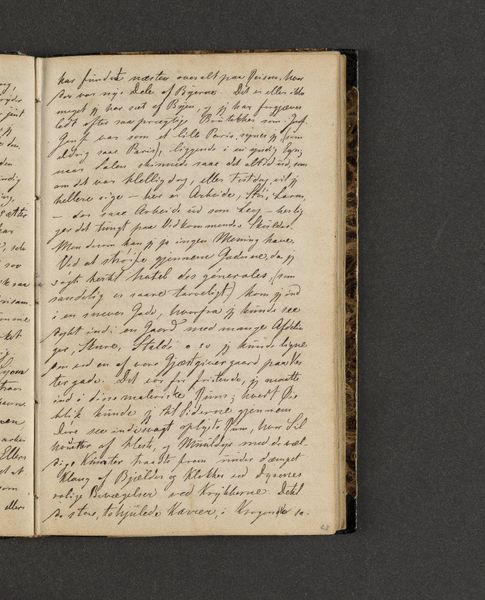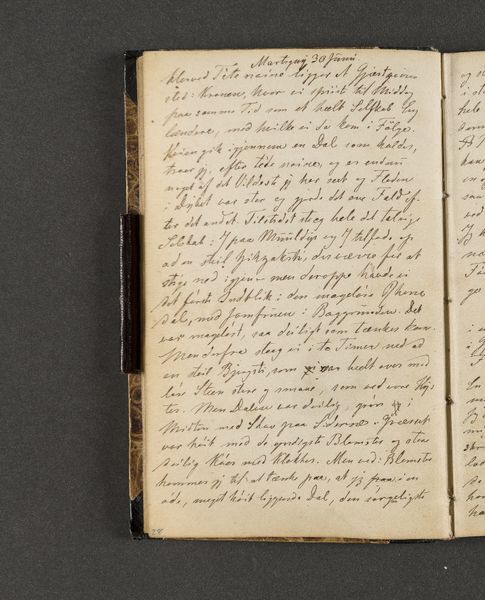
drawing, paper, ink
#
drawing
#
narrative-art
#
paper
#
ink
#
romanticism
Dimensions: 161 mm (height) x 103 mm (width) x 11 mm (depth) (monteringsmaal)
Curator: Here we have a page from Johan Thomas Lundbye’s "Rejsedagbog," or Travel Journal, dating from 1845. It's rendered in ink on paper and currently held at the Statens Museum for Kunst. Editor: It has an intimate feel; the densely written script conveys a sense of immediacy, like catching a fleeting thought on paper. The small scale draws you in—it feels quite personal. Curator: Indeed, it's fascinating how Lundbye blends the act of travel with personal reflection. Romanticism certainly valued the individual’s subjective experience of the world, and diaries like this become incredibly valuable historical documents, reflecting not just where one went, but how they processed those journeys. Editor: The very materiality speaks of labor too—the ink, likely handmade, the quality of the paper… each a testament to specific artisanal practices, reflective of 19th century craft. Consider, also, that this wasn’t mass-produced, inviting us to question who had access to literacy, or simply, the luxury to record travels. Curator: It definitely opens questions about audience. Was it intended for himself, for loved ones, or perhaps even for future publication, shaping his legacy? His Romantic leanings would be conducive to all three of these possible purposes. The placement of such objects in art museums reinforces a cultural valuation of artistic vision across time and socio-economic position. Editor: Placing something like this in a museum adds another layer, distancing us further from its original, intimate context. However, it can spark contemplation about how knowledge and stories were circulated before digital platforms—a material-driven process connecting body, mind, and the landscape itself. I can almost feel him writing by candlelight in a moving carriage. Curator: It makes me reflect on the Romantic artist as a type of proto-ethnographer—eager to document the unfamiliar. The social implications, however, include the implicit power dynamics present between observer and observed. How do such accounts contribute to a shared understanding, or solidify existing socio-cultural structures and positions? Editor: Absolutely. And how do the tools—pen, ink, paper—mediate that process of observation, coloring perspective through their own limits and affordances. This small object, full of ink, prompts immense questions. Curator: Yes, and prompts our reflections on our own cultural expectations when interpreting a text or journal as artistic expression and a site of intellectual history.
Comments
No comments
Be the first to comment and join the conversation on the ultimate creative platform.
